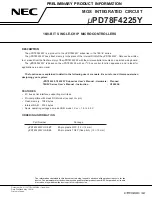
Software User Manual
D-Link Unified Access System
12/10/09
Document
34CSFP6XXUWS-SWUM100-D7
Configuring VLAN Routing
Page 545
C
ONFIGURING
VLAN R
OUTING
This section provides an example of how to configure D-Link Unified Access System software to support VLAN routing. The
configuration of the VLAN router port is similar to that of a physical port. The main difference is that, after the VLAN has been
created, you must use the
show ip vlan
command to determine the VLAN’s interface ID so that you can use it in the router
configuration commands.
The diagram in this section shows a Layer 3 switch configured for port routing. It connects two VLANs, with two ports
participating in one VLAN, and one port in the other. The script shows the commands you would use to configure D-Link
Unified Access System software to provide the VLAN routing support shown in the diagram.
Figure 376: VLAN Routing Example Network Diagram
Use the following screens to perform the same configuration using the Web Interface:
1
From the
LAN > L2 Features > VLAN > VLAN Configuration
page, perform the following configuration:
•
Create VLANs 10 and 20.
•
Include interfaces 0/1 and 0/2 as members of VLAN 10, and set tagging for all interfaces to Tagged.
•
Include interface 0/3 as a member of VLAN 20, and set tagging for all interfaces to Tagged.
2
From the
LAN > L2 Features > VLAN > Port Configuration
page, set the port VLAN ID for interfaces 0/1 and 0/2 to 10
and the port VLAN ID for interface 0/3 to 20.
3
Navigate to the
LAN > L3 Features > VLAN Routing Configuration
page.
4
Enter 10 in the VLAN ID field, and then click
Create
.
0HYSICAL0ORT
6,!.2OUTER0ORT
0HYSICAL0ORT
6,!.2OUTER0ORT
,AYER3WITCH
,AYER3WITCH
,AYER3WITCH
6,!.
6,!.
0HYSICAL
0ORT
















































